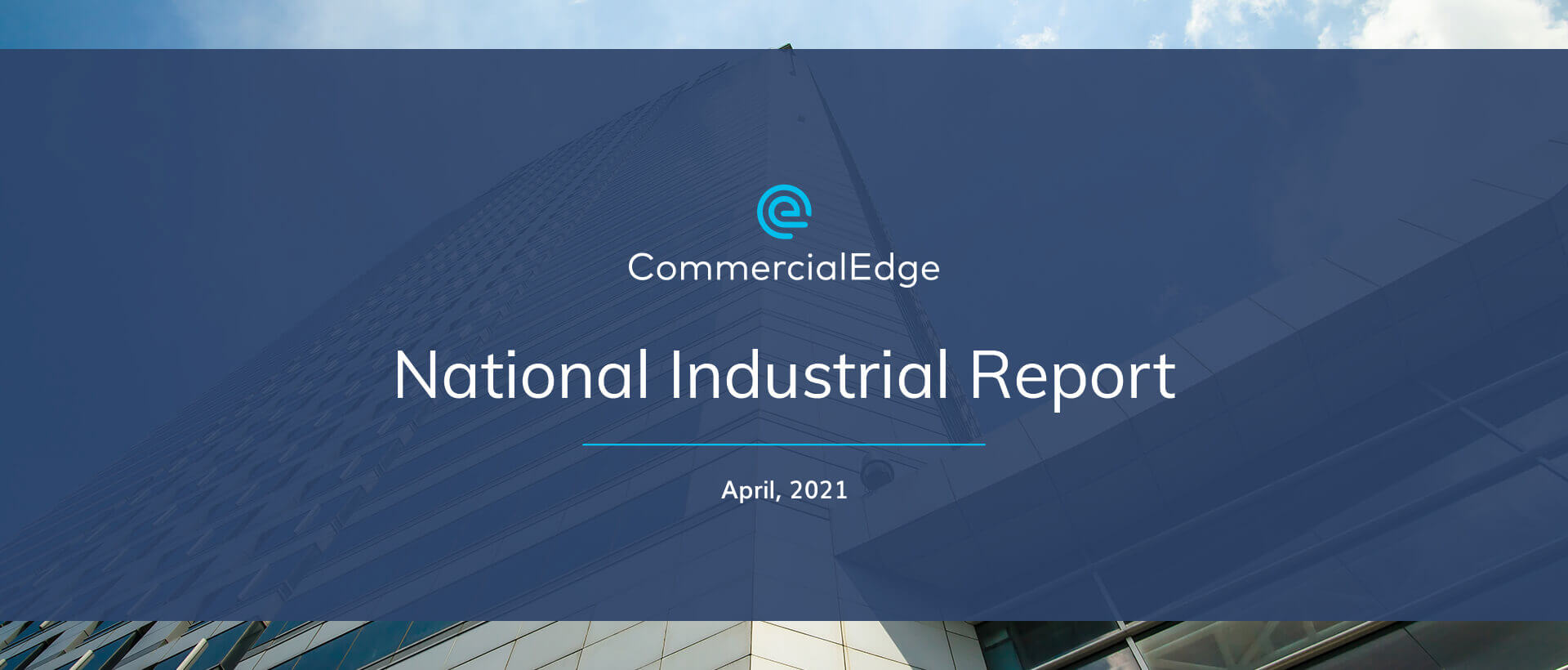Key Takeaways:
- Average rate for U.S. industrial space increased 4.4% year-over-year
- Vacancy rate remained just above 6% as new stock meets increasing demand
- Sale price per square foot shot up 30% in 12 months
- Nearly 400 million square feet of new supply in development nationwide
Inland Empire, LA, Nashville See Largest 12-Month Rental Rate Increases
Following a year-over-year increase of 4.4%, national average rates for industrial real estate reached $6.53 per square foot in March, with western coastal markets seeing the largest increases in lease rates. Specifically, Inland Empire rates grew 8.2% compared to March 2020, while industrial space for lease in Los Angeles was 6.9% pricier year-over-year (Y-o-Y). Nashville industrial real estate boasted the third-largest rate of growth — 6.6% Y-o-Y.
In contrast, the markets where rents remained most stable during the last 12 months were Detroit, which saw a slight drop in average rates of 0.5% Y-o-Y; St. Louis, where average rental rates were effectively the same in March of this year as they were last year; and Kansas City, where rental rates for industrial space saw a modest uptick of 0.9% Y-o-Y.
Meanwhile, the Orange County market took the top spot in terms of actual prices, with industrial real estate here commanding $11.11 per square foot last month. The second-priciest rates were in the Bay Area, where leases averaged $10.48 per square foot.
High Absorption of New Space Keeps National Industrial Vacancy Rate Steady
Because new industrial space has been absorbed at a high rate, national vacancy remained relatively steady at 6.1% last month. Even so, across the markets we surveyed, industrial vacancy varied between 11.6% in Boston and 2.1% in the Inland Empire market throughout the month of March.
What’s more, the Port of Los Angeles has seen record trade volume each month, partly due to the growth of e-commerce in the past year. In turn, this has directly fueled even further tightening of space availability across the already hot Southern California industrial markets. For details on individual market vacancy rates and lease spreads, find the full report at the bottom of this page.
Q1 Industrial Sales Surpass $8B, Sale Price Per Square Foot Shoots up 30% Y-o-Y
Transactions closed during the first three months of this year totaled $8.1 billion across the U.S. industrial markets we tracked for our latest report. While this was notably less than the nearly $11 billion in Q1 sales last year, the sale price per square foot for industrial space in March 2021 was actually 29.1% higher year-over-year. On average, U.S. industrial assets traded for $110.04 per square foot last month.
In particular, investor interest in Southern California markets remained intense, as sales closed in Los Angeles and the Inland Empire accounted for more than 15% of the country’s total sales volume in the first quarter. Furthermore, with these same markets recording the largest 12-month rental rate increases nationwide, investor appetite for these assets is expected to remain strong for the foreseeable future.
Nearly 400 MSF Under Construction Nationwide, DFW & Chicago Boast Largest Pipelines
As of March 2021, there was 367.8 million square feet of new industrial space under construction across the top markets we analyzed for this report. Of this, 60.5 million square feet of new supply has already been delivered since the start of the year and an estimated 200 million square feet is scheduled for completion before the end of the year.
High-sprawl capacity markets continue to host the most generous pipelines. In this way, the Dallas-Fort Worth metroplex is first for industrial development, with 28,380,671 square feet currently under construction, which amounts to 3.9% of the total stock. Chicago is second in line, with current developments adding up to nearly 20 million square feet of new industrial supply. Houston industrial real estate is third, with 17,275,539 square feet of new construction currently underway.
Data surveyed for this report showed that nearly 420 million square feet of industrial property is in the planning stages, and forecasts point to a steady annual yield of between 250 and 300 million square feet through 2025.
Download the full April 2021 report for a full picture on how U.S. industrial markets fared in Q1, including insights on industry and economy recovery fundamentals.

For an even deeper dive into industrial fundamentals, supply forecasts and the overall impact of the pandemic, join CommercialEdge Senior Research Manager, Peter Kolaczynski, and Yardi Matrix Vice President, Jeff Adler, at the Industrial & Office National Outlook Webinar at 10 a.m. PT on Thursday, May 13.
Methodology
The monthly CommercialEdge national industrial real estate report considers data recorded over the course of 12 months and tracks top U.S. industrial markets, with a focus on average rents; vacancies (including subleases but excluding owner-occupied properties); deals closed; pipeline yield; and forecasts, as well as the economic indicators most relevant to the performance of the industrial sector. For a detailed methodology, download the full report above.
Stay current with the latest market reports and CRE news:
Latest Posts
Recent Reports
Anticipated Office Distress to Materialize in 2025
The wave of distress anticipated since the peak of the pandemic has begun to materialize at the beginning of 2025.
Tariff Uncertainty Brings Short-Term Disruptions to Industrial Sector
Tariff uncertainty will lead to delayed leasing decisions from industrial occupiers, while also increasing construction costs
Coworking Continues to Gain Traction Amid Shifting Market Dynamics
Coworking spaces across the nation continue to grow in numbers and popularity, bringing more options to the office sector amid ongoing shifts.







